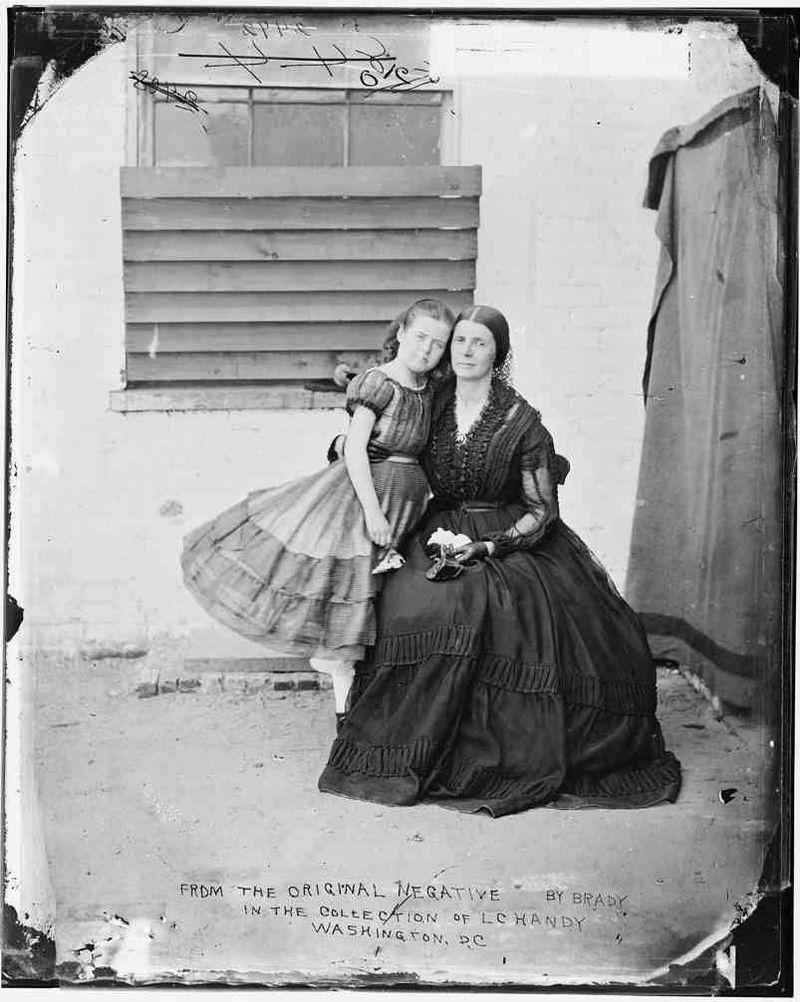
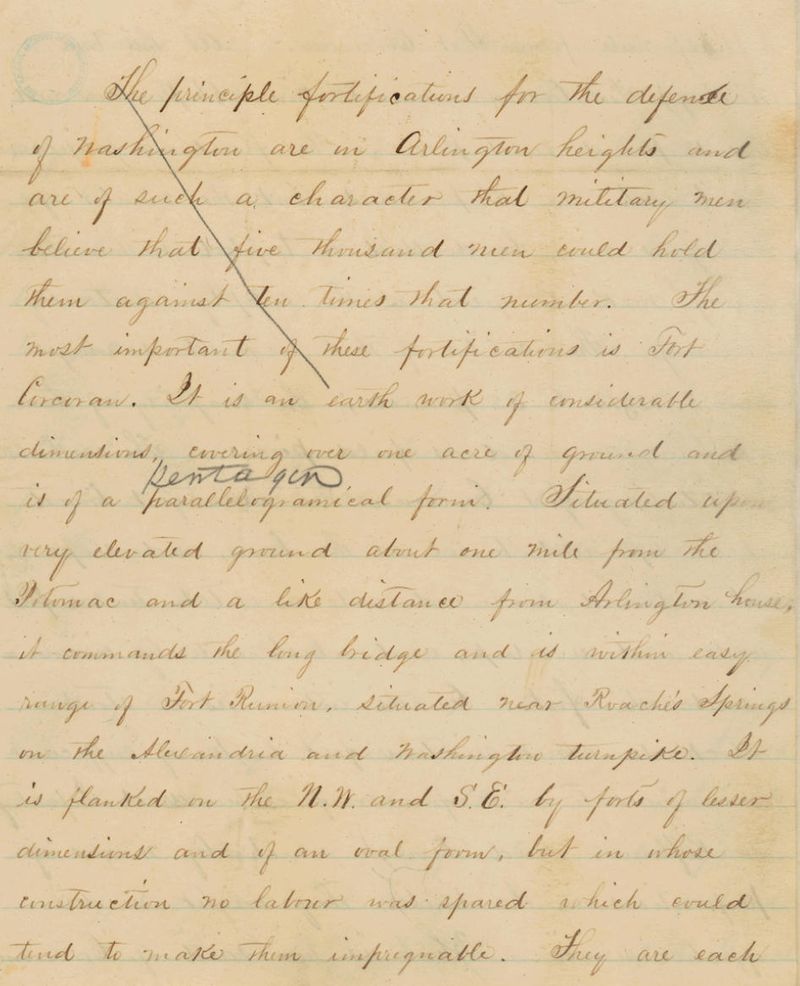
Civil War: Confederate Spy Rose O’Neal Greenhow: Letters, Memoirs, and Histories
$19.50
Description
Rose Greenhow: Confederate Spy and Socialite
Timeline of Main Events
- 1817: Rose O’Neal is born in Port Tobacco, Maryland. Her father is murdered when she is an infant.
- c. 1830: Rose O’Neal moves to Washington, D.C., to live at a boarding house run by her aunt, Mrs. A.V. Hill at the Old Capitol Building.
- 1835: Rose O’Neal marries Dr. Robert Greenhow.
- 1830-1850: Dr. Robert Greenhow serves as librarian and chief translator for the Department of State.
- 1850s: Rose Greenhow becomes a prominent socialite in Washington, D.C., during her husband’s time in Washington, and includes political figures among her friends.
- 1854: Dr. Robert Greenhow dies in California. Rose’s social influence in Washington continues to grow.
- Pre-Civil War: Rose O’Neal Greenhow develops strong pro-Southern sympathies, influenced partly by Senator John C. Calhoun.
- Early 1861: Rose Greenhow is recruited as a Confederate spy by U.S. Army officer Thomas Jordan.
- 1861: Rose Greenhow actively gathers intelligence and passes messages to the Confederacy.
- July 21, 1861: Rose Greenhow provides information that helps the Confederacy win the First Battle of Bull Run.
- August 23, 1861: Allan Pinkerton arrests Rose Greenhow at her home and seizes her papers, discovering her espionage activities.
- August 1861-January 1862: Rose Greenhow is imprisoned in her home under surveillance, but continues spying.
- January 1862: Rose Greenhow and her daughter, “Little Rose”, are transferred to the Old Capitol Prison.
- March 1862: Rose Greenhow is given a hearing on charges of espionage, but is not tried.
- June 1, 1862: Rose Greenhow is deported to the South by the Union. She is welcomed in Richmond, Virginia.
- 1862: While in Richmond, Rose Greenhow writes “My Imprisonment and the First Year of Abolition Rule in Washington.”
- August 1863: Rose Greenhow travels to England and France as an official courier for the Confederacy, promoting the Southern cause.
- 1863: Rose Greenhow publishes her memoirs “My Imprisonment and the First Year of Abolition Rule in Washington.”
- Late 1863/Early 1864: Rose Greenhow is received in the court of Napoleon III and has an audience with Queen Victoria in Britain. She becomes engaged to the 2nd Earl Granville.
- October 1, 1864: Rose Greenhow drowns off the coast of Wilmington, North Carolina, after her blockade runner runs aground and her rowboat capsizes.
- October 1864: Rose Greenhow is given a full military burial in Oakdale Cemetery, Wilmington, North Carolina.
Cast of Characters
- Rose O’Neal Greenhow (1817-1864): A Washington, D.C., socialite, Confederate spy, and author. Known as “Wild Rose” or “Rebel Rose.” She was a passionate secessionist who gathered intelligence for the Confederacy and traveled Europe promoting its cause. She is credited with helping the Confederacy to victory at the First Battle of Bull Run.
- Dr. Robert Greenhow (d. 1854): Rose’s husband, who served as librarian and chief translator for the Department of State. His work brought them to California.
- Florence Greenhow: Rose’s daughter, who wrote to Rose to express her concerns regarding her mother’s activities with secessionists.
- “Little Rose” Greenhow: Rose’s daughter, who was imprisoned with her mother at the Old Capitol Prison.
- John O’Neal: Rose’s father, a planter, who was murdered when she was an infant.
- Mrs. A. V. Hill: Rose’s aunt, who ran the boarding house in Washington, D.C. where Rose lived as a young woman.
- John C. Calhoun (d. 1850): South Carolina Senator who privately tutored Rose Greenhow and greatly influenced her pro-Southern beliefs.
- James Buchanan (1791-1868): 15th President of the United States. Friend and correspondent of Rose Greenhow.
- Thomas Jordan: U.S. Army officer who recruited Rose Greenhow as a Confederate spy and provided her with a code. He later joined the Confederate Army and served as General Beauregard’s adjutant.
- Irvin McDowell (1818-1885): Brigadier General in the Union Army, whose troop movements were reported on by Greenhow.
- Joseph E. Johnston (1807-1891): Brigadier General in the Confederate Army who commanded troops at First Bull Run.
- Pierre G.T. Beauregard (1818-1893): Brigadier General in the Confederate Army who commanded troops at First Bull Run.
- Betty Duvall: Young woman who worked with Greenhow and carried a message to the Confederates, wrapped in her hair.
- Henry Wilson (1812-1875): U.S. Senator from Massachusetts and chairman of the Senate’s Military Affairs Committee. He was reportedly Rose Greenhow’s lover, and letters from him were found among her seized papers.
- Allan Pinkerton (1819-1884): Head of U.S. Intelligence Service and founder of the Pinkerton National Detective Agency, who captured and investigated Rose Greenhow.
- Granville Leveson-Gower, 2nd Earl Granville (1815-1891): British statesman whom Rose Greenhow became engaged to while in Europe.
- Jefferson Davis (1808-1889): President of the Confederate States of America. He credited Rose Greenhow with helping the Confederacy win the First Battle of Bull Run.
- Napoleon III (1808-1873): Emperor of France. Rose Greenhow was received in his court.
- Queen Victoria (1819-1901): Queen of the United Kingdom. Rose Greenhow had an audience with her in Britain.
- George H. Lee: Virginia Supreme Court Justice, whose letter was found among Greenhow’s seized papers.
- John C. Breckinridge (1821-1875): 14th Vice President of the United States, Presidential candidate, U.S. Senator, and 5th Confederate States Secretary of War. Letters from him were found among Rose’s seized papers.
- William H. Seward (1801-1872): United States Senator from New York and 24th United States Secretary of State. His name is listed among those found in Rose’s seized papers.
- William Ingraham Kip (1818-1893): Missionary Bishop of California, Protestant Episcopal bishop. His name is listed among those found in Rose’s seized papers.
- William L. Yancey (1814-1863): Journalist, politician, orator, diplomat and an American leader of the Southern secession movement. His name is listed among those found in Rose’s seized papers.
- Joe Lane (1801-1881): United States Senator from Oregon and 1860 vice presidential nominee of National Democratic Party. His name is listed among those found in Rose’s seized papers.
- Captain Treadwell S. Moore: Rose O’Neal Greenhow’s son-in-law, who was married to her daughter Leila.
- Mary Greenhow Lee: Rose O’Neal Greenhow’s sister-in-law
- John Hutchins (1812-1891): U.S. Representative from Ohio. His name is listed among those found in Rose’s seized papers.
Civil War: Confederate Spy – Rose O’Neal Greenhow: Papers – Letters – Memoirs – Histories
This collection contains 1,111 pages of documents, including correspondence, personal accounts, historical analyses, and photographs, all pertaining to Rose O’Neal Greenhow.
Rose O’Neal Greenhow, who lived from 1817 to 1864, was a well-known Washington, D.C., socialite who also acted as a spy for the Confederacy during the Civil War.
Nicknamed “Wild Rose” and “Rebel Rose,” she was born in Port Tobacco, Maryland, in 1817. Her father, John O’Neal, a plantation owner, was killed when she was very young. Around 1830, she moved to a boarding house in Washington, D.C., at the Old Capitol building, run by her aunt, Mrs. A. V. Hill. There, she encountered numerous politicians who were also residents. Greenhow was a celebrated beauty, known for her charisma and intelligence. In 1835, she married Dr. Robert Greenhow, who served as the librarian and chief translator for the Department of State from 1831 to 1850. They had four daughters: Florence, Gertrude, Leila, and Rose.
Due to her husband’s position in Washington, D.C., during the 1850s, Greenhow became a prominent figure in society, hosting many gatherings and cultivating friendships with important political figures. Among her acquaintances were President James Buchanan and South Carolina Senator John C. Calhoun, who personally mentored her. Calhoun was influential in fostering Greenhow’s loyalty to the South. She cared for Calhoun in his final days. Dr. Robert Greenhow’s career took him to California in the 1850s, where he passed away in 1854. As a widow, Greenhow’s social standing in the nation’s capital continued to rise.
At the start of the Civil War, Greenhow secretly gathered military information from conversations with her social circle. Among her supporters were Senator Henry Wilson, who headed the Committee on Military Affairs, and Senator Joseph Lane of Oregon. A fervent supporter of the South, Greenhow was enlisted as a Confederate spy by U.S. Army officer Thomas Jordan, who later joined the Confederacy. Jordan gave her a 26-character code for encrypting communications. Greenhow was dedicated to her spy work, sending coded messages to the Confederacy and managing a spy network in Washington, D.C. Confederate President Jefferson Davis, as well as some historians, believed that information she provided was crucial to the Confederate victory at the First Battle of Bull Run. She alerted the Confederates about Brig. Gen.
Irvin McDowell’s movements, which allowed Brig. Gen. Joseph E. Johnston and Brig. Gen. Pierre G. T. Beauregard to combine their forces and defeat the Union army on July 21, 1861. A young woman named Betty Duvall, who worked with Greenhow, transported the message hidden in a small black silk pouch tucked into her hair. There’s a viewpoint that historians and authors have exaggerated the significance of Greenhow’s spying for the Confederacy. It’s argued that besides confirming McDowell’s troop movement to Manassas, which enabled Beauregard to prepare for battle, her espionage was largely inconsequential.
Many of her reports came from casual observations made by people walking around Washington, D.C. While she did have one source with inside knowledge, Senator Henry Wilson, who headed the Senate’s Military Affairs Committee, and was rumored to be her lover, it’s unlikely he provided her with any crucial military or political intelligence. Pinkerton’s team found “love letters” from Wilson among the papers they seized.
Allan Pinkerton, leading U.S. Intelligence, monitored Greenhow as part of his counterintelligence work and gathered enough evidence to arrest her. Greenhow admitted she was aware of being watched but had continued her espionage activities regardless.
On August 23rd, Pinkerton apprehended Greenhow. A search of her home uncovered personal correspondence, coded messages, notes on troop movements, and partially burned papers she had tried to destroy. Although she used a code for some of her reports, she also kept a plaintext version of one message, which allowed Pinkerton to break her code.
These seized documents are currently held by the National Archives. Initially, she was confined to her residence at the location now occupied by the Hay-Adams Hotel. Following her capture, she persisted in communicating with her Confederate contact, Thomas Jordan, who served as General Beauregard’s assistant. Due to her ongoing secret operations while under house arrest, she and her daughter were moved to the Old Capitol Prison in January 1862.
This prison was located in the same building where her aunt had previously operated a boarding house, which is now the site of the Supreme Court. Her daughter, nicknamed Little Rose, remained with her during her incarceration, and they were photographed together by a photographer from Mathew Brady’s studio. Even while imprisoned, she persisted with her espionage and coded communication.
This is frequently used by historians as evidence of Greenhow’s ingenuity. However, contemporary counterintelligence experts interpret it differently, seeing Pinkerton’s actions as resourceful. Pinkerton maintained strict surveillance over Greenhow, limiting her visitors and penalizing any guards who neglected to examine items leaving the premises. They point out that the Confederacy stopped relying on the information she sent.
In March 1862, Rose Greenhow had a hearing regarding the accusation of espionage, but she was not formally tried. In May 1862, the Union decided to send Greenhow to the Confederacy.
She was freed on June 1, 1862, and escorted through Union lines to Richmond, Virginia, where she stayed for a brief period. The people of Richmond gave her a warm reception. While in Richmond, she authored a book titled “My Imprisonment and the First Year of Abolition Rule in Washington”. In August of 1863, Rose Greenhow evaded the naval blockade to reach England and France. There, she acted as a formal messenger for Confederate President Jefferson Davis, advocating for the Southern cause among the European elite, who were largely sympathetic to the Confederacy. Greenhow was welcomed at the court of Napoleon III in France and met with Queen Victoria in Britain, where she also became engaged to the Earl Granville.
During her time in Europe, she released her book, “My Imprisonment and the First Year of Abolition Rule at Washington.” Later that year, she boarded the blockade runner “Condor” for her return journey to the South, carrying secret messages for the Confederacy. Near Wilmington, North Carolina, the ship was confronted by Union forces and ran aground. Fearing capture and imprisonment again, Greenhow asked to be transferred to a smaller boat to reach the shore. Her rowboat overturned in the rough seas, and she died by drowning on October 1, 1864. A common belief is that the weight of the $2,000 in gold she carried, her book earnings, dragged her under.
Her body was discovered on the beach by a Confederate soldier. In October of 1864, the Confederate government honored Greenhow with a full military burial at Oakdale Cemetery in Wilmington, North Carolina. Her tombstone inscription identifies her as “Mrs. Rose O’N. Greenhow, a bearer of dispatches to the Confederate Government.”
The collection includes:
PINKERTON SEIZED PAPERS – LETTERS This collection consists of 647 pages of documents, including letters, papers, and notes from a Pinkerton file. These materials were confiscated on August 23, 1861, when Rose O’Neal Greenhow was apprehended for spying for the Confederacy. Some of the letters are incomplete, having been recovered from a stove where Greenhow apparently attempted to destroy them.
The documents cover various topics of the time, including military matters, and contain items such as defense plans and fortifications of Washington, the organization of the Union Army, and information about Union Army activities. They also include references to military positions, nominations, and recommendations for officers and soldiers. Additionally, some letters deal with personal affairs and mention well-known figures in society.
Key items in the collection are:
Letters from former President James Buchanan to Rose O’Neal Greenhow. A letter from George H. Lee regarding his Supreme Court appointment. Letters from John C. Breckinridge. A letter from Florence Moore to her mother, Rose Greenhow, expressing concern about the arrest of women as spies and urging her to avoid secessionists. A letter from G. Donnellan to Greenhow, discussing communication and information sharing. A list of individuals suspected of treason. Love letters from Senator Henry Wilson, who headed the Senate’s Military Affairs Committee. And descriptions of the defenses and fortifications surrounding Washington.
The collection includes correspondence from:
James Buchanan, the 15th U.S. President (1857-1861).
John C. Breckinridge, the 14th U.S. Vice President (1857-1861), a presidential candidate in 1860, a U.S. Senator from Kentucky in 1861, and the 5th Confederate States Secretary of War in 1865.
William H. Seward, a U.S. Senator from New York (1849-1861) and the 24th U.S. Secretary of State (1861-1869).
William Ingraham Kip, a Missionary Bishop of California and a Protestant Episcopal bishop. Here’s a rephrasing of the provided text:
William L. Yancey was a journalist, politician, public speaker, diplomat, and a key American leader in the Southern states’ movement to secede from the Union.
Joe Lane served as a U.S. Senator representing Oregon from 1859 to 1861 and was the National Democratic Party’s vice-presidential candidate in 1860.
Henry Wilson was a U.S. Senator for Massachusetts, holding office from 1855 to 1873.
George H. Lee was a justice on the Virginia Supreme Court.
Captain Treadwell S. Moore was the son-in-law of Rose O’Neal Greenhow.
Mary Greenhow Lee was the sister-in-law of Rose O’Neal Greenhow.
John Hutchins served as a U.S. Representative for Ohio from 1859 to 1863.
PHOTOGRAPHS
There are 35 photographs and illustrations related to Greenhow, including 4 pictures of Rose O’Neal Greenhow herself and 4 of the Old Capitol Prison. The collection also contains photos of individuals associated with Greenhow, such as Allan Pinkerton, James Buchanan, John C. Calhoun, John C. Breckinridge, William H. Seward, Joe Lane, Henry Wilson, John Hutchins, and Edward D. Townsend.
CIA STUDIES IN INTELLIGENCE EXCERPT
This section includes a 4-page excerpt about Greenhow from the 1966 CIA publication, “Studies in Intelligence,” Volume 10, Issue 3. Sherman Kent, a CIA employee, created “Studies in Intelligence” in 1955 as a publication for intelligence professionals.
MY IMPRISONMENT FIRST YEAR OF ABOLITION RULE AT WASHINGTON
A digital copy of Greenhow’s 373-page memoir, “My Imprisonment and the First Year of Abolition Rule at Washington,” originally published in 1863, is provided. George S. Bryan described Greenhow’s memoir as “self-centered, bitter, and unreliable” in his book, “The Spy in America.” In her memoir, Greenhow clearly explains her reasons for taking great risks to provide intelligence to the Confederacy. Greenhow’s memoir provides a key perspective on the racial hierarchy, women’s roles, Southern nationalism, and Confederate identity during that time.
THE SPY OF THE REBELLION EXCERPT
This is a 25-page excerpt from Allan Pinkerton’s book, “The Spy of the Rebellion.” In this section, Pinkerton recounts his involvement in the surveillance, arrest, and investigation of Greenhow.
National Counterintelligence Executive CI Reader Excerpt
This section contains 27 pages from the CI Reader Volume I, Chapter 2, published by the National Counterintelligence Executive. The National Counterintelligence Executive, or ONCIX, functions as a component of the Office of the Director of National Intelligence. It is composed of experienced counterintelligence personnel and other experts from various national intelligence and security organizations. Following the development and execution of multiple versions of a seminar exploring the history of American counterintelligence, the National Counterintelligence Center opted to create a three-part collection of readings to accompany the counterintelligence lectures.
Volume I, Chapter 2, titled “The Civil War: Lack of a Centralized Direction,” examines counterintelligence activities during the Civil War. This chapter profiles key figures such as Union Counterintelligence leaders William H Seward, Allan Pinkerton, Lafayette Baker, and Henry Beebee Carrington. It also features notable spies including Belle Boyd, Spencer Kellogg Brown, Rose O’Neil Greenhow, C. Lorain Ruggles, Henry Bascom Smith, Felix Grundy Stidger, Benjamin Franklin Stringfellow, and Elizabeth Van Lew.
Related products
-
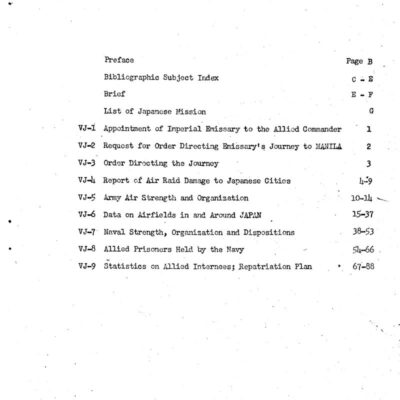
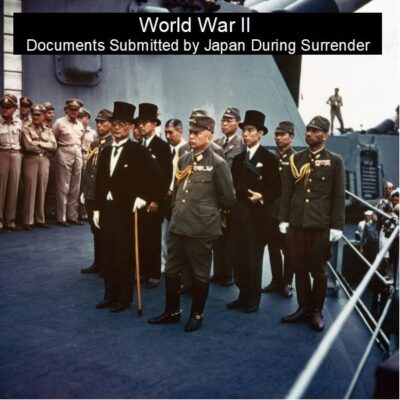
Japan’s Surrender Documents from World War II
$1.99 Add to Cart -
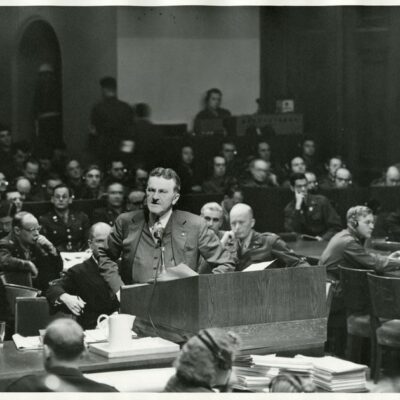
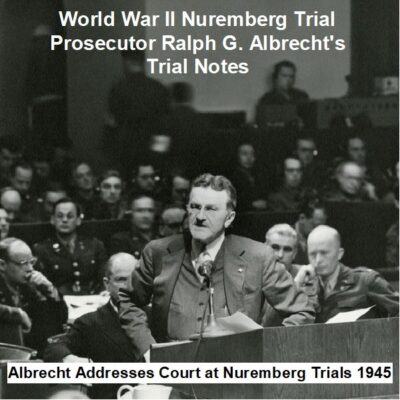
Trial Notes of Ralph G. Albrecht, Prosecutor at the Nuremberg Trials of World War II
$3.94 Add to Cart -
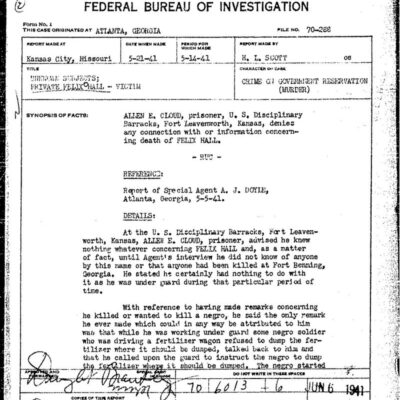
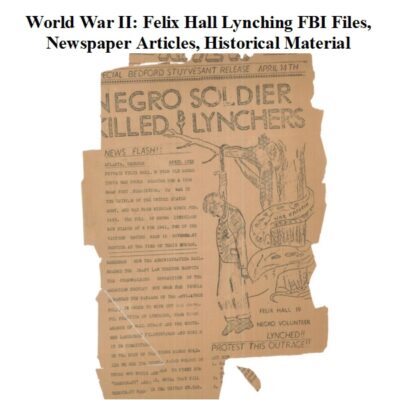
World War II: Felix Hall Lynching – FBI Files, Articles, Historical Records
$9.99 Add to Cart -
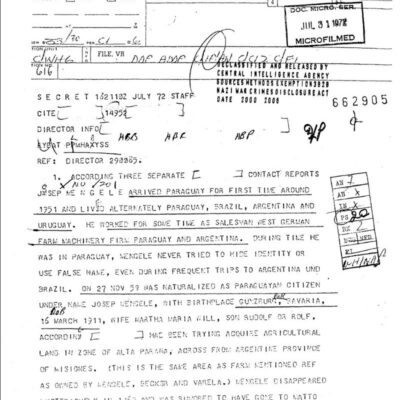
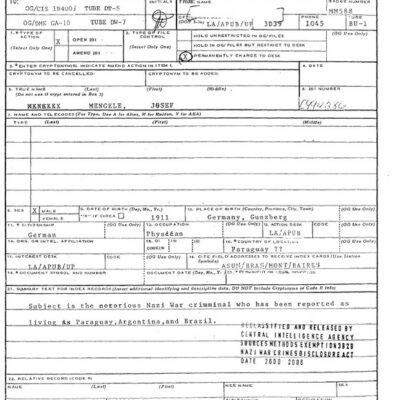
Josef Mengele CIA Files
$19.50 Add to Cart